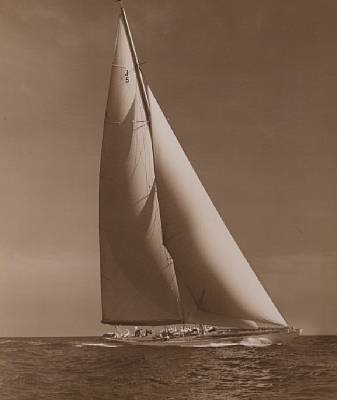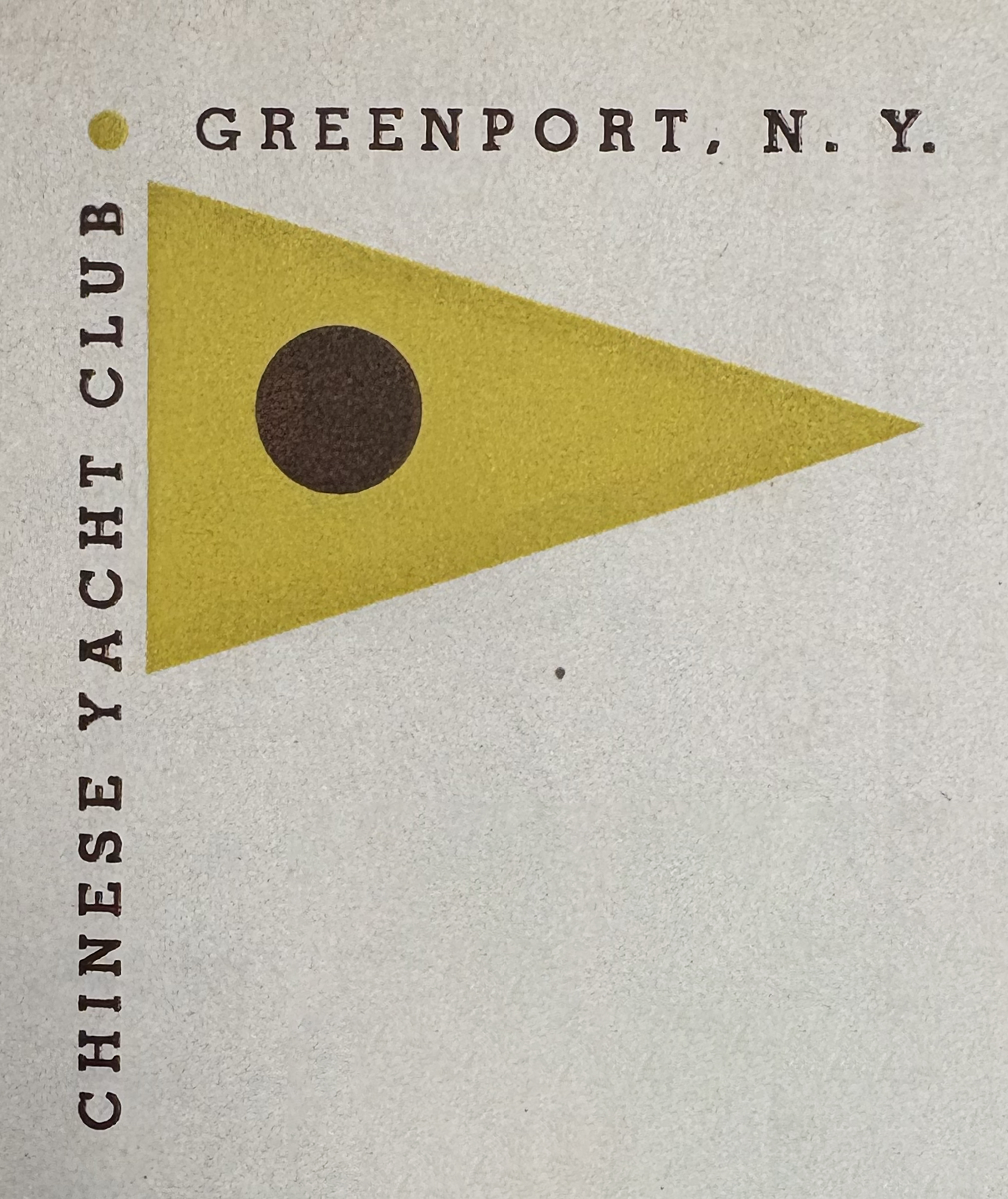Captain George Hiram Monsell: The Unsung Hero of the 1937 America’s Cup and Greenport’s Maritime Legacy

Amid the economic turbulence of the Great Depression, the America’s Cup teetered on the edge of uncertainty. The grandeur of the J-Class yachts—symbols of extreme wealth and luxury—threatened to overshadow the spirit of the competition, making the Cup seem like an exclusive contest for the elite. Commodore Richard Fairey of the Royal London Yacht Club challenged this narrative, proposing a smaller yacht design that was swiftly rejected by the New York Yacht Club (NYYC). This rejection, however, set in motion the creation of Endeavour II, a vessel that, despite its innovation, struggled with multiple mast failures. In response, the NYYC, under the leadership of Harold Vanderbilt, commissioned the design of Ranger—a yacht that would revolutionize both design and racing techniques. Created by Olin J. Stephens and Starling Burgess, Ranger boasted innovative features, such as a low aft profile and advanced sail-handling methods, which gave it a distinct advantage in the trials and solidified its place as the Cup defender.
The 1937 America’s Cup was not merely a contest of yachts; it was a test of technological superiority, design brilliance, and strategic mastery. Ranger established its dominance early in the competition, winning the first race by an impressive 17-minute margin. Despite Endeavour II’s clever strategies and persistent efforts, Ranger remained unbeatable. As the races continued, the American yacht’s lead grew, propelled by the tactical ingenuity of Vanderbilt and the seamless coordination of the crew. The fourth and final race was particularly dramatic. In a chaotic pre-start sequence, both yachts engaged in aggressive maneuvers that were more typical of frostbite dinghies than the towering J-Class vessels. Amidst the frenzy, Endeavour II crossed the line prematurely, forcing her to restart. Though the British yacht minimized the loss, Ranger’s superior speed and coordination ultimately secured another resounding victory.
Ranger’s performance during the 1937 America’s Cup is widely regarded as one of the most extraordinary in the history of the competition. It was celebrated not only for its innovative design but also for the exceptional skill of the crew that sailed her. The victory marked the end of the J-Class era in the Cup, with the introduction of the 12-Metre rule in 1958 ushering in a new phase of competition. Yet, the J-Class yachts remain enduring symbols of a golden age in yachting.
Sailing Master of Champions

Central to Ranger’s success—and to the triumph of the J-Class era—was Captain George Hiram Monsell. His leadership was not an accident but the result of decades of experience and trust earned at sea. Monsell’s unparalleled seamanship and authority on the water made him the perfect choice for Harold Vanderbilt, who enlisted him as the sailing master for three of the most iconic American defenders in Cup history: Enterprise (1930), Rainbow (1934), and Ranger (1937). Each campaign built upon the last, with the 1937 defense representing the zenith of the J-Class era.
With Ranger’s advanced design, the yacht required more than just superior engineering—it demanded a sailing master who could exploit every advantage. That sailing master was George Hiram Monsell. Under his command, Ranger swept Endeavour II 4-0, a feat made possible by a flawless rhythm between Monsell and his crew. Many of the crew members were local fishermen, personally selected by Monsell for their maritime expertise, which fostered a natural synergy on deck. With Vanderbilt directing tactics and Monsell orchestrating every movement, Ranger’s performance in the 1937 America’s Cup became one of the most commanding victories in the competition’s history.
Roots in the Sea: The Early Life of George Hiram Monsell
Captain George Hiram Monsell’s maritime journey began on September 21, 1881, in the seafaring village of Greenport, New York. Born to James Monroe Monsell and Sarah Elizabeth Myers Monsell, he was one of nine children raised among the salt air and boatyards of eastern Long Island. His father, Captain James Monroe Monsell, was a key figure in Greenport’s oyster trade, founding the Green Ford Oyster Company in the 1880s. This early exposure to the sea not only instilled a deep respect for the water but also shaped George’s character as a confident, skilled mariner.
From humble beginnings as an oysterman, George Monsell developed into one of the most respected racing skippers of his generation. His enduring connection to Greenport was reflected in his strong ties to the local community and the crew he commanded. Many of the sailors aboard his yachts were local fishermen, and their shared experience on the water created a unique bond that translated into seamless teamwork on race day.
The Greenport Crew and the Chinese Yacht Club

The camaraderie of this local crew may very well have contributed to the formation of the Chinese Yacht Club, a fellowship co-founded by Monsell. Though often overlooked by outsiders, this informal group consisted of seasoned sailors from Long Island’s East End—men whose deep intuition and hard-earned experience on the water may have been a quiet but crucial asset in America’s Cup competition. Monsell’s dedication to the maritime community extended well beyond racing; he remained actively involved with local institutions, including the Shelter Island Yacht Club and the East End Surf Fishing Club.
Monsell’s deep-rooted connection to Greenport was reflected in his statement about Enterprise: “Almost a 100% Long Island boat,” he remarked, noting that the yacht was outfitted and rigged in Greenport. Even Ranger’s tender vessel, Bystandard, was constructed locally at the Greenport Basin and Construction Company—underscoring the importance of local craftsmanship in achieving global success.
A Life Preserved in Wood and Brick
By the late 1940s, Monsell had retired from racing, but the sea never left him. His home in Greenport, known affectionately as the “Hobby House,” became a testament to his maritime legacy. Filled with yacht memorabilia, including ship’s bells, photographs, and personal artifacts, the house was a living museum. In a 1947 profile in The Nassau Daily Review, the house was described as a sanctuary of memories. Two staterooms from Ranger were repurposed with butternut paneling, and the second-floor lounge, built with cedar trees uprooted during the 1938 hurricane, gave visitors the feeling that they were “aboard ship.”
“Monsell’s home is crowded with memories of his racing days and visitors get the impression that they are ‘aboard ship,’ when escorted through the rooms,” the article described. “The wood is butternut and when the gallant cup defender was dismantled, Monsell salvaged the rooms to complete his ‘Hobby House,’ the exterior brick of which came from the demolished Riverhead school house.”
Celebrating a Local Hero
On December 9, 1937, the Chinese Yacht Club held a dinner in Monsell’s honor, celebrating his leadership aboard Enterprise, Rainbow, and Ranger. This event was not just a formal recognition but a reflection of the respect and admiration the community held for Monsell’s quiet mastery and lasting impact, (Note the number of attendees). Though he passed away on April 12, 1951, Monsell’s legacy continues to shape Greenport’s maritime identity. His descendant, Carole Monsell, the director of the Sterling Historical Society of Greenport, has worked tirelessly to preserve his story, curating an archive of photographs, documents, and artifacts that honor his contribution to yachting history and the Greenport community.